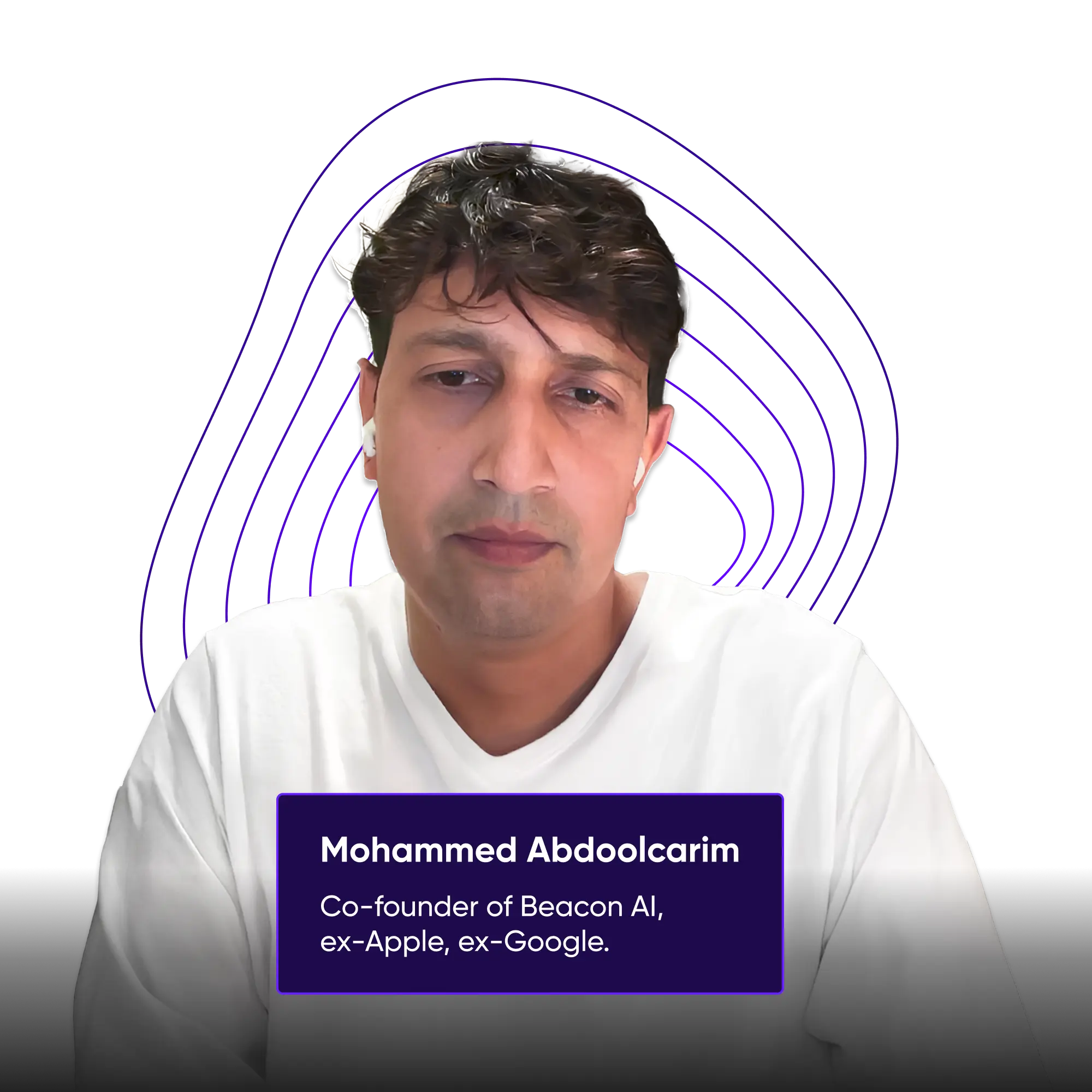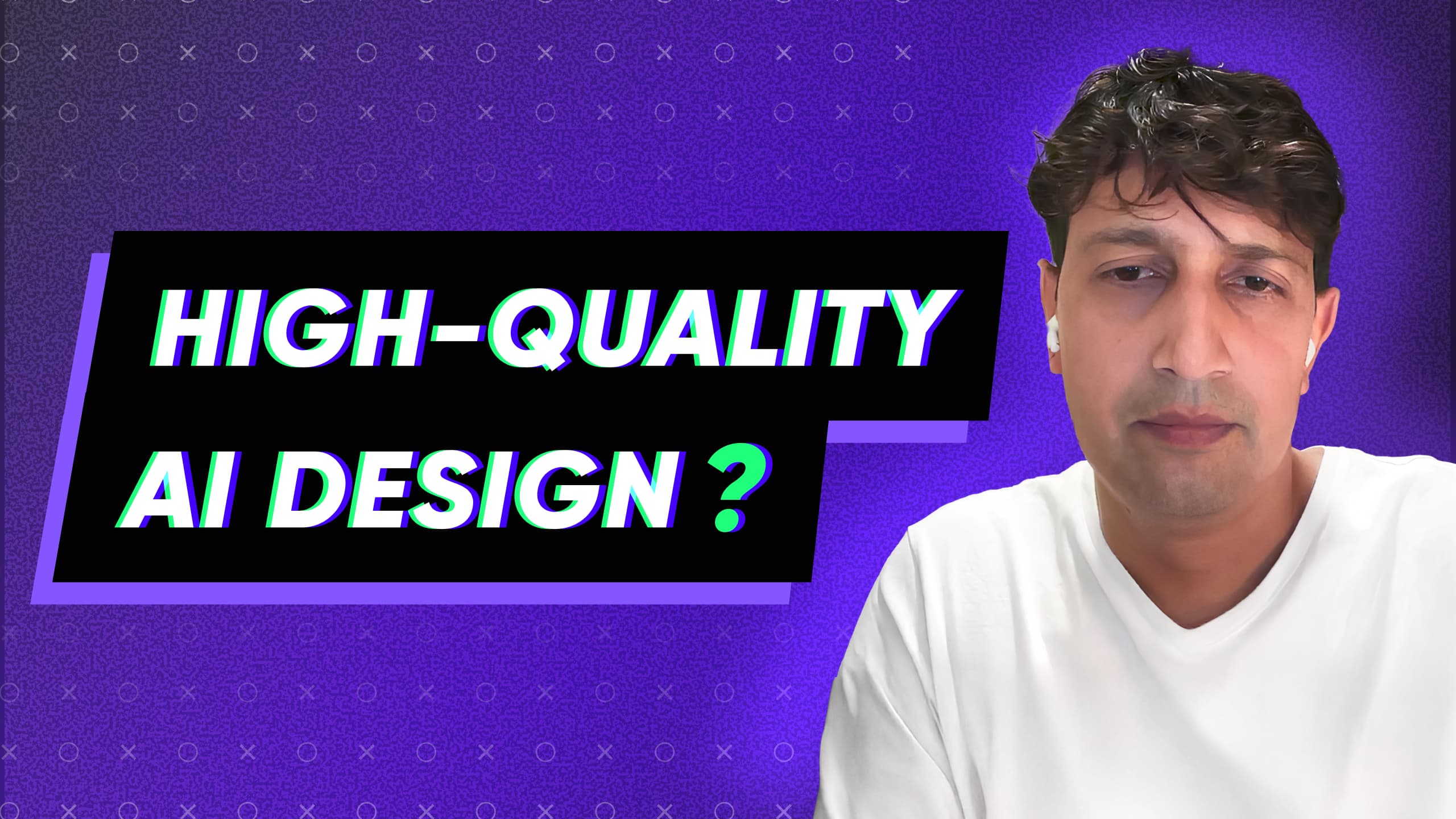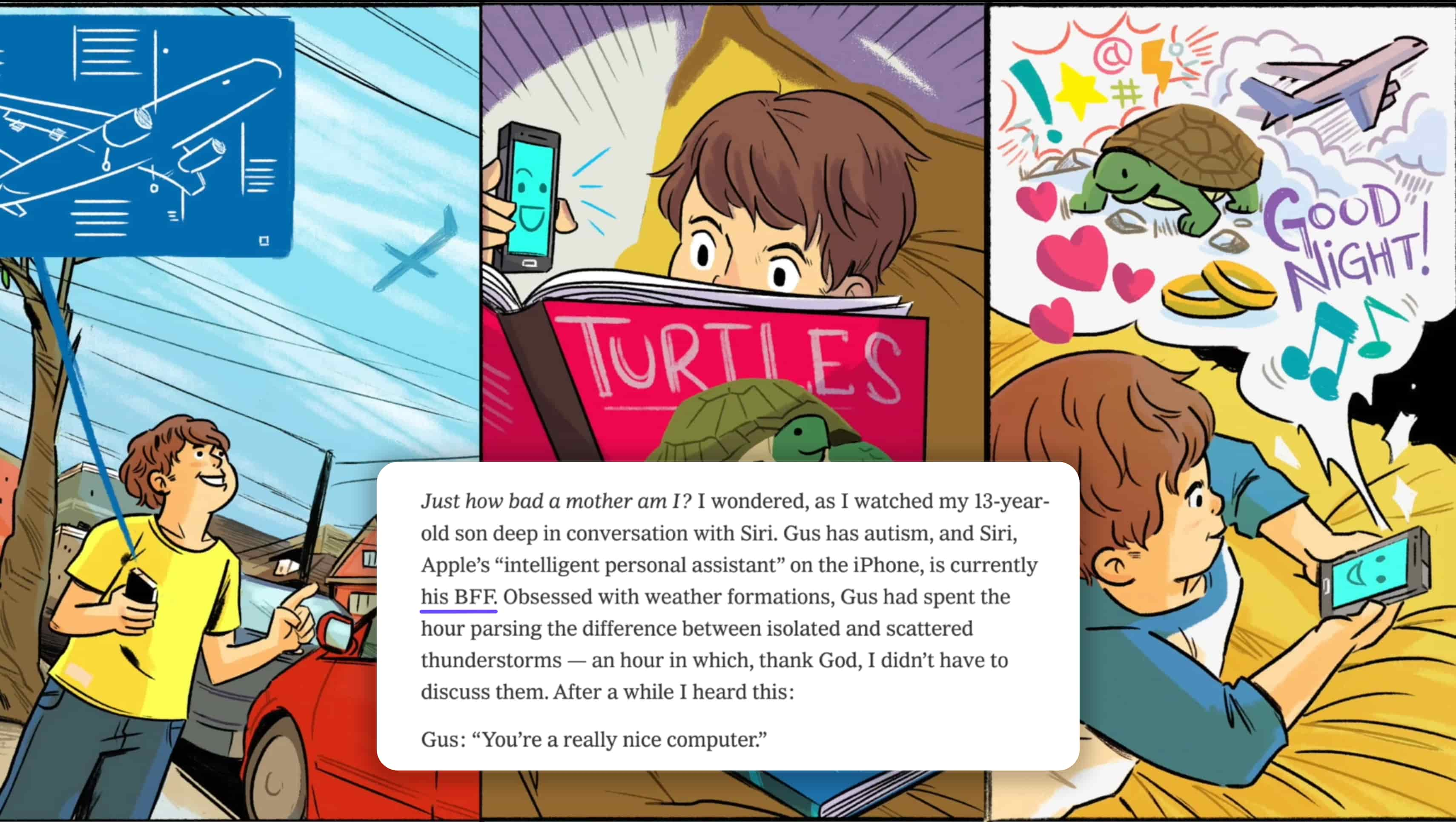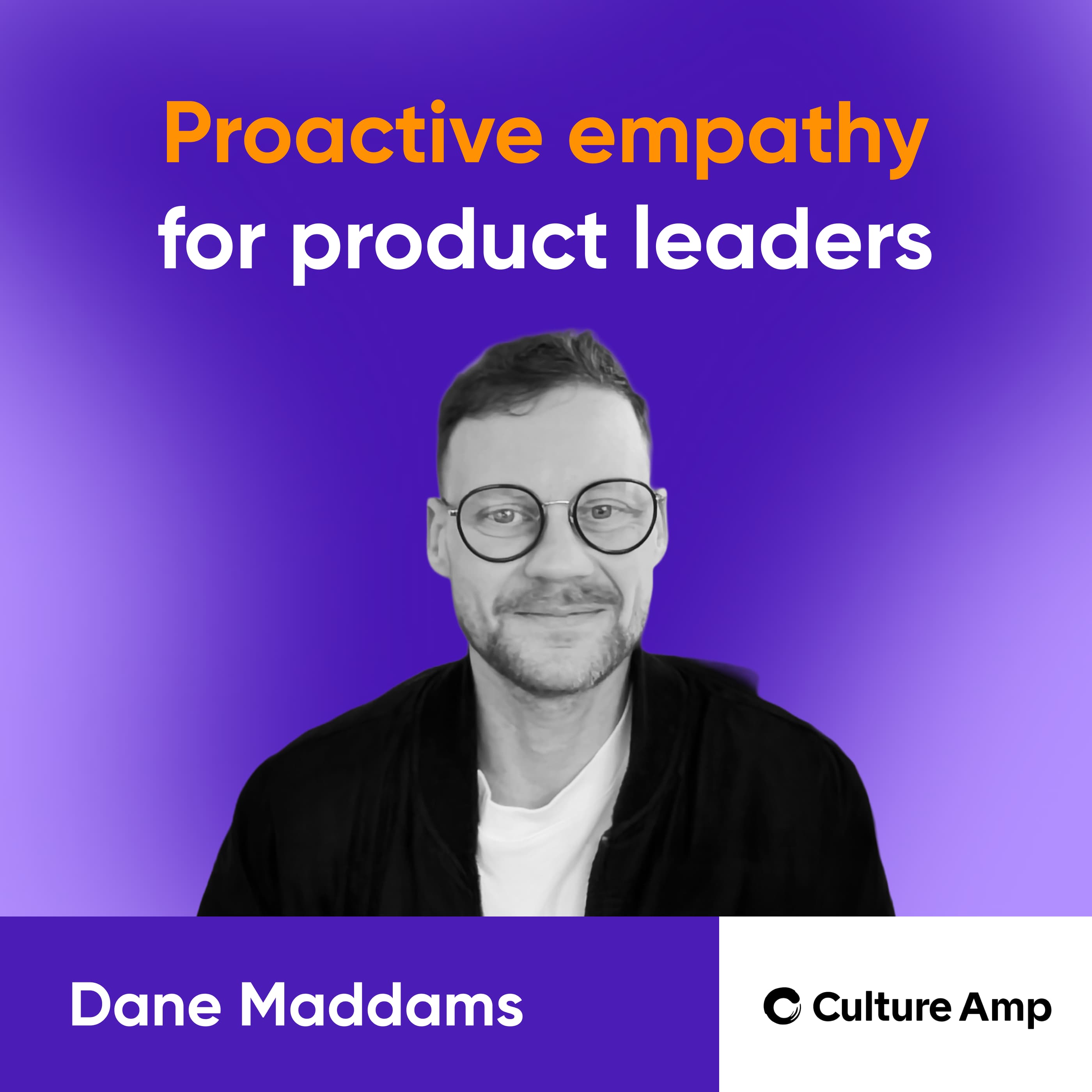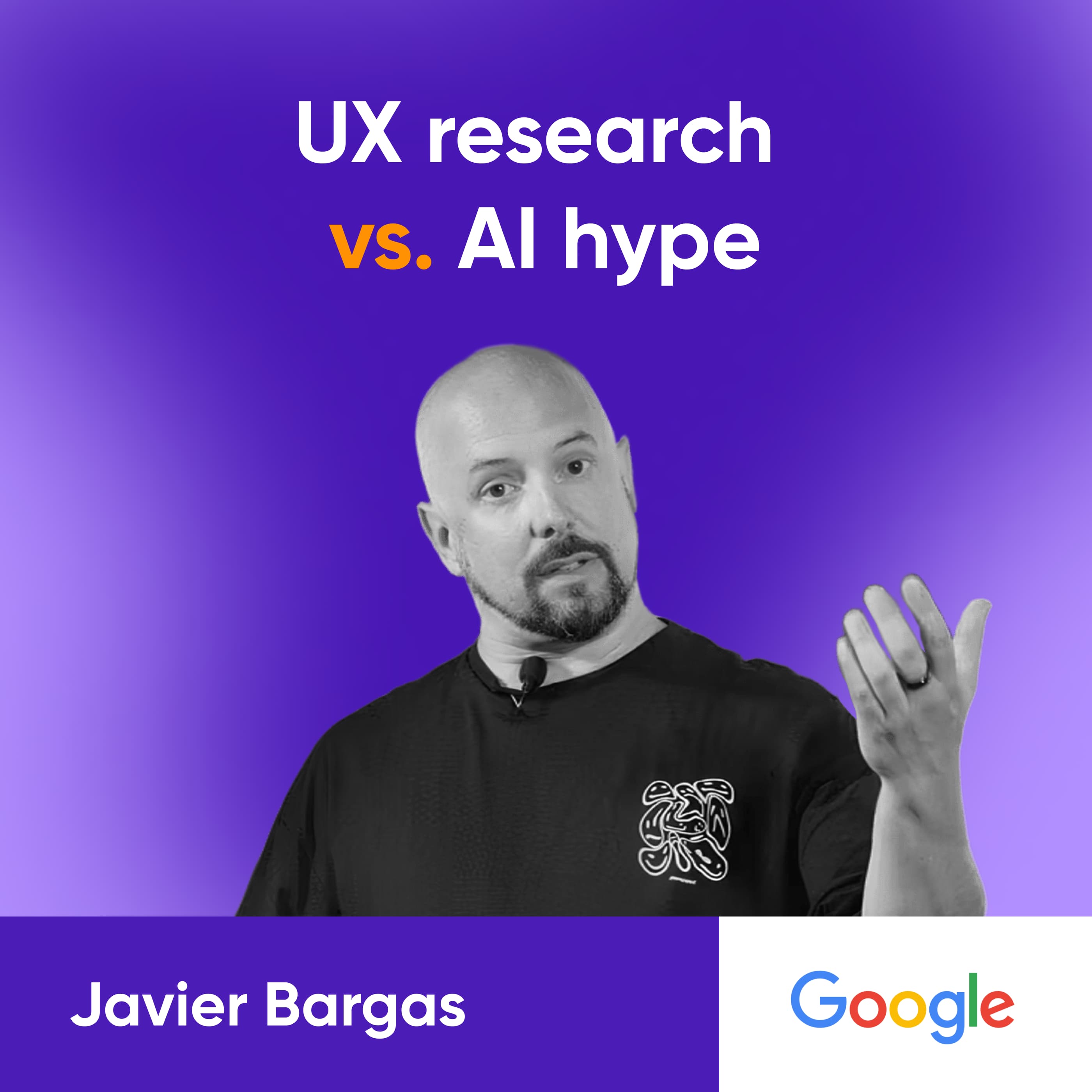Opinion on Apple's Liquid Glass design
“My initial impression is that it's fresh. It's different. It's adding a very tangible type of UI to computers. And maybe that's part of their new philosophy, which is that computers are no longer this flat screen, that it's much more tactile. You can talk to it, you can touch it. Of course, I think it remains to be seen through the testing and the beta that they're releasing, how it's actually going to be used by real users. And it's actually something I spoke with my co-founder about, because my co-founder actually worked at Apple for many more years than I did during the time of Steve Jobs. And he said Apple has a way of setting the tone, but then observing how people are also responding. And I think Apple doesn't shy away from imposing its own taste, right? I remember having a conversation with a couple of Apple designers and, you know, in the age of AI, there was a concern about whether we're losing taste and that as humans, we still have that. And I think Apple leads into that and it's not afraid to try something new, especially when it comes to taste.”
AI strategy: Apple vs. Google
“The speeds that we're seeing are unprecedented. We're seeing, you know, new technologies pop up, you know, every few days in some cases. And Apple's approach in my experience has been much more precise, much slower, but careful, right? And about creating something that is truly amazing in terms of the user experience. And so when Apple innovates, right, we expect something that's delightful, that's beautiful. I think the question really comes down to is this slower, more precise, careful approach going to either win or at least going to coexist with the very fast speed of development. And especially when it comes to privacy, personalization, these are areas that require thinking, right? And going really fast on these two areas, we don't know, we don't know yet, right? Enterprises are still wary of AI because of the privacy aspects, right?
My co-founder and I have been influenced by both the launch fast approach like you have at Google, but also really crafting a great user experience. And we've seen success, you know, out of both strategies. Launching fast for us is important because it's really about offering value every week to users, new value, right? And especially when you're working in a very difficult space, getting that AI accuracy up, increasing the number of integrations, deepening the value proposition that you're offering with new use cases, that's really important to keep momentum, especially at the pace that the industry is going in. So launching fast is definitely our default culture. At the same time, we also love craft. We also love building products that delight us and that also drive business outcomes. The products that we remember are the products that Apple builds, right? Linear, Gamma, Granola, right? And there's a reason why they succeed because they really provide that better user experience. It translates into delight and usage, which at the end of the day is what we're trying to do. So what we do is we try to pick very key topics. We call them big rocks. For example, stickiness is a big rock. And we really try to create a great offering for that. We can iterate very fast in terms of smaller features. But when it comes to delivering bigger bets, that's when I think we take more of an Apple-like approach.”
The real story of Siri
“The initial version of Siri was really targeted around task completion for finding a restaurant, making bookings at restaurants, booking a movie ticket, making reminders, looking for the weather. And that is what we assumed our users were going to do. And so the initial ones did that because we also guided them. And they knew that they needed to test those use cases that are available. But when we launched Siri, I actually was standing in a line outside a restaurant in New York, and a guy behind me basically said, "I love you, Siri," and started asking all these really fun questions, like, "Will you marry me?" and really testing Siri on more of the fun, sort of emotional level. And that's something we just didn't expect. Like we didn't expect the value to be like a friend or this little boy who was autistic – it was an article written about him – how Siri was his best friend.
We had no idea. We didn't design for that. But when your product scales, you find all of these really interesting edge cases that actually aren't really edge cases. They're actually in some cases the main, you know, use case.
What most people don't understand is that even the best designers, even the best teams out there go through many, many revisions. Just to give you an example. The Siri that the world saw, the one that we launched on Apple, was the 52nd version of Siri. The work of Siri actually started in the 1990s. Adam Cheyer was a student of Douglas Engelbart, and they actually started building that first generation of assistants, right? And so over the course of, gosh, 20 years, they went through so many versions of Siri that the one that we finally launched on the iPhone really used the knowledge. And so that's what I think people don't quite understand when it comes to vibe coding or even vibe designing is that at the end of the day, it's really about building something that works with your users.”
Vibe designing and vibe coding
“We're still in the early days of vibe coding and vibe designing. And the use case that designers told me is that, oh, you know, I have an idea and it's just easier to vibe-code it, right, to see how the interaction works. And that interaction is not production level code, but the value is that I get to show my engineer and really have an intelligent conversation about how this works. And that gives me that feedback loop, right? Back into my design process. Then I take my learnings and then I have to recreate it in Figma, you know, because the source of truth, especially with my design system, is still in Figma. So I don't think we've really, you know, truly seen how vibe coding and designing is going to end up, but that is where, you know, we decided to, to actually integrate in these tools to take your prototype and enhance it, to actually elevate it, to find any of the UX issues, to actually suggest new features that you might have actually missed that can actually improve the engagement or even the retention. And so that's where we see the next piece of Vibe coding is really going that last mile, taking that prototype to something that I'm actually proud of shipping.
I think one of the most exciting things about vibe coding is that it allows us to work with very short feedback loops, right? We can work in a very scrappy way. We can build things quickly, test it, get that feedback and do another version. And I'm sure, you can relate that getting the first draft is not the hard part. It's the iteration, right? How many times you have version 10, version 11, know, final, final, right? And so it's really about helping people get through that stage. And that's where I think the challenge is for design, because design has a very different characteristic to code. Code can compile. It has the right answer. You know when you get the right answer, it compiles. Design, you don't know when you have the right answer. It's much more ambiguous. And the promise, I think of this, if you want to say sort of the design phase of the product development process is how do you go from ambiguity to clarity super fast? And that's actually the problem that we're trying to solve. I think that's the part that's missing right now, but it's also really hard to do because you really have to understand context and talking to users is very much part of that context. So, I certainly don't suggest a world where you don't talk to users anymore, but users become one of the inputs, right? The other is your strategy document. The other is your analytics, right? Bringing all of that together in a way that is seamless and easy really allows me to have that fast feedback loop to go from ambiguity to clarity, which is really what design is all about.”
High-quality AI design
Mohammed: In the last decade or two, you could build a mobile app or a desktop web app in your studio alone by yourself, you need a very small team and you can still build something pretty decent. But in AI, I think what really separates someone in this very crowded space is to actually generate very high quality AI results. That's way beyond what you can get from baseline models like ChatGPT. And to do that, it really requires applying your AI with real data, with real customer data. So find customers that are willing to work with you, you know, find those trusted testers and apply your AI to their data, offer them value and use that refinement learning, right? Use that feedback. It really comes back to feedback loops. And I think feedback loops are even more important when it comes to AI, because you can't get a feedback loop just by being in your studio by yourself. You have to look at how the customer responds to the results, especially because we are dealing in a world that is non-deterministic. You never know what you're going to get. So the customer needs to see what they are getting and then can respond. And that allows you to then refine the prompt, to refine your agent or even the model if you're working on a model to really get to that next level. And you just go through that process a hundred times. And by the end of it, you will get an AI product that really can deliver high-quality results consistently across many customers.
You can get really far just by working in the application layer and really understanding how to get the best quality results from AI, whether it's through a prompt, whether it's through providing it context. In our case, for example, we've created a database of user behavior and psychology principles that we wrote ourselves, and we spent months writing it. The reason is that this educated the AI that essentially tuned it to give results that are biased towards those principles. And so it's really about learning how to prompt, but also to construct the context and the data that you provide with that prompt to then get the results that's, you know, your customers are happy with. It does help to have a domain expert on your team. So for example, we have a panel of design experts. And so I defer to those design experts to also tell me whether the results that we're producing are quality results, or whether they would actually use it. And so having, you don't need to be in design, you could be in another field, whether it's education, law, health, but getting a domain expert on the panel as part of your team to review those responses will help you get that feedback loop. And then it's a matter of refining the prompt, refining the context, the different pieces of data, and really getting a great idea of how to work with the AI to generate high quality results.”
Product roadmap at Beacon AI
“We're working on the big rocks, the big bets. And one of those big bets is that people are starting to build and design in other applications beyond Figma, Cursor, Lovable, and a lot of co-gen tools, v0. So our first big rock is to create a very seamless integration into these co-gen tools and allow not just developers, but anyone using it to be able to get an analysis on their live production app and to fix those UX issues that are annoying, but also to actually give me more deeper, meaningful recommendations, like actual new features that can actually engage my audience better. So that's number one. And number two is around context. We have a vision of creating what we're calling a product memory, which is essentially a knowledge base of your company's product data. It could include user research, analytics, your design guidelines, even your PRD and strategy. Documents that tend to be very scattered all over the place, and it's really hard to access them at the moment that you're designing. And that's what our product memory system does. It aggregates all of that data and then through AI agents makes it accessible at the moment that you are designing. So it's a really hard problem to solve because as I mentioned, design has that characteristic of being very ambiguous and not having a right answer. And so we're going to see how we do, but that's the next big step for us.”

